B program Palpable Stirrings of Science:
A Selection of “Culture Films” from the German UFA
In this program, we introduce some of the Kulturfilm (often considered in Japan to overlap conceptually with their own “culture films”), works made by UFA in Germany between 1933 and 1937 that might be called the vanguard of science films.
Kulturfilm are academic and educational documentary films that were made by producer Nicholas Kaufmann for German as well as foreign consumption. In Japan, the films—which Towa distributed from the 1930s onward—had a great impact on the science-film industry because of their high quality.
Above all, these films are still magical even after seventy years, which you’ll fully understand once you see things like the use of time-lapse photography in Green Drifters, or micrography in Mysteries of Life (Herta Jülich, one of the directors of this film, was the leading authority in the field).
—Kato Takanobu
 About UFA About UFA
The biggest film company of its time in Germany, UFA (Universum-Film AG) was founded in December 1917, in the middle of World War I, to make war-propaganda films. Started as a state-run business, UFA was privatized in 1921, and went on to provide success to many directors: Fritz Lang with Metropolis (1926), F.W. Murnau with Der Letzte Mann (1924), Josef von Sternberg with Der Blaue Engel (1930), and others. The movies UFA gave to the world were highly valued not only in Germany, but also internationally; the company flourished from the end of the silent era through the start of talkies. However, with inflation and sharp production-cost increases, among other problems, UFA was sliding little by little into financial difficulties, and in March 1927 was taken over by Alfred Hugenberg, an entrepreneur who later became the Minister of Economics in Nazi Germany. Increasingly under the influence of Nazi Germany from the 1930s onward, UFA came to make Nazi propaganda under the direction of Minister of Propaganda Joseph Goebbels. At around this time, the Jewish and anti-Nazi employees who had always anchored UFA began immigrating abroad one after another. After World War II, UFA was put under the management of the Allies, and along with the partition of the country itself, it was split into Eastern and Western parts. The studio on the Eastern side continued as the official filmmaking agency DEFA (Deutsche Film AG), the only film company in East Germany, but it was dismantled after reunification. In the West, there have been many attempts to resuscitate UFA, but, with most of its property having been sold to the German-based Bertelsmann media company, it hasn’t reached the point of recapturing the kind of power it once had. |
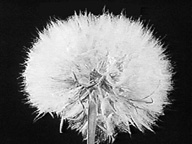 Green Drifters
Green Drifters
Grüne Vagabunden- GERMANY / 1933 / Japanese-narration version / B&W / 35mm / 14 min
Director: Wolfram Junghans
Script: Ulrich K.T. Schultz
Photography: Paul Krien
Music: Herbert Windt
Source: National Film Center
Tumbling, dancing in the wind, drifting on the water . . . . A “plant action” science film that dynamically uses a number of film techniques, including time-lapse photography, to depict the strategies of plants using various means to expand their living area. The image of big, thin, wing-shaped seeds soaring through the air like gliders is a must-see.
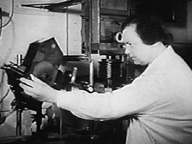 Mysteries of Life
Mysteries of Life
Mysterium des Lebens- GERMANY / 1937 / German / B&W / 35mm / 14 min / Subtitled in Japanese
Directors: Ulrich K.T. Schultz, Herta Jülich
Music: Ernst-Erich Buder
Source: National Film Center
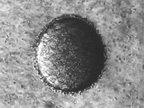 Starting from single-celled creatures like stentors, who multiply by division, through higher forms of life like newts and rabbits, this film brings to the screen the mechanisms of the life cycle. It shows us the captivating beauty of “life’s relay race,” making the most of beautiful micrography to exhaustively capture the cellular division of fertilized eggs, which almost seem to tremble.
Starting from single-celled creatures like stentors, who multiply by division, through higher forms of life like newts and rabbits, this film brings to the screen the mechanisms of the life cycle. It shows us the captivating beauty of “life’s relay race,” making the most of beautiful micrography to exhaustively capture the cellular division of fertilized eggs, which almost seem to tremble.
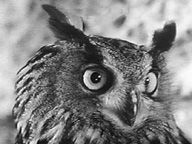 Predators of the Night
Predators of the Night
Vom Uhu und anderen Gesichtern der Nacht- GERMANY / 1936 / Japanese-narration version / B&W / 35mm / 15 min
Directors: Ulrich K.T. Schultz, Wolfram Junghans
Photography: Walter Suchner
Music: Hans Ebert
Source: National Film Center
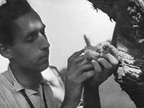 The ecology of owls, the predators of the night, is depicted in combination with the film staff’s rather comical efforts. Things like the dramatic use of cutbacks in scenes featuring the owl’s natural enemies the falcon and the horned owl, along with the use of distinctive narration, lead one to imagine that later science films about animals were surely heavily influenced by UFA’s work.
The ecology of owls, the predators of the night, is depicted in combination with the film staff’s rather comical efforts. Things like the dramatic use of cutbacks in scenes featuring the owl’s natural enemies the falcon and the horned owl, along with the use of distinctive narration, lead one to imagine that later science films about animals were surely heavily influenced by UFA’s work.
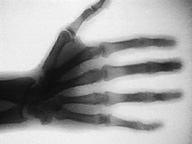 Roentgen Rays
Roentgen Rays
Röntgenstrahlen- GERMANY / 1937 / German / B&W / 35mm / 18 min / Subtitled in Japanese
Director, Script: Martin Rikli
Narrative Structure: Nicholas Kaufmann
Source: National Film Center
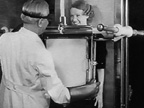 Roentgen rays (X-rays), which were discovered in 1895, are now indispensable not only in the medical field but also in scientific research and general industry. The filming of these humorous and almost grotesque x-ray images—the sight of air moving through the trachea to the alveoli, the sight of eaten food running through the esophagus, and so on—was made possible through the development of special equipment.
Roentgen rays (X-rays), which were discovered in 1895, are now indispensable not only in the medical field but also in scientific research and general industry. The filming of these humorous and almost grotesque x-ray images—the sight of air moving through the trachea to the alveoli, the sight of eaten food running through the esophagus, and so on—was made possible through the development of special equipment.
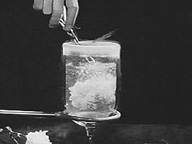 Cold, Colder, and Coldest
Cold, Colder, and Coldest
Kalt . . . kälter . . . am kältesten . . . Ein Film von der Erzeugung tiefer Temperaturen- GERMANY / 1937 / Japanese-narration version / B&W / 35mm / 12 min
Director, Script: Martin Rikli
Photography: Kurt Stanke
Source: National Film Center
Showing things like a bell made of mercury frozen at -39°C, a flame burning in liquid, and liquid oxygen sticking to magnets, this movie uses easily understandable examples to skillfully visualize the world of cryogenic temperatures far beyond our everyday experience. The image of petals being frozen by liquefied gas, becoming brittle, and being smashed to pieces was later used in engine-oil commercials and so on, becoming a visual cliché.
